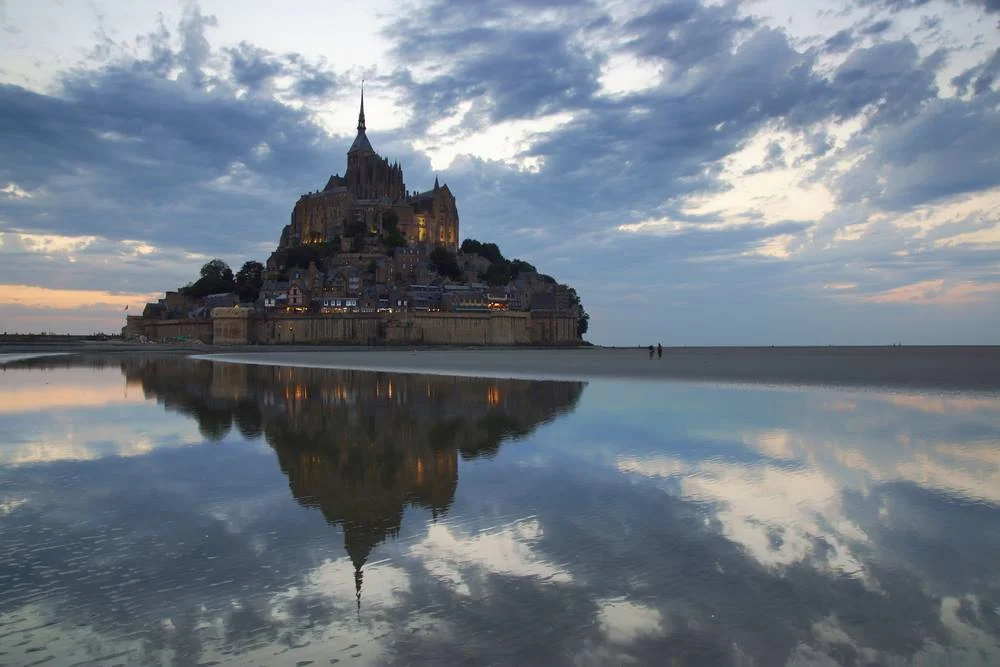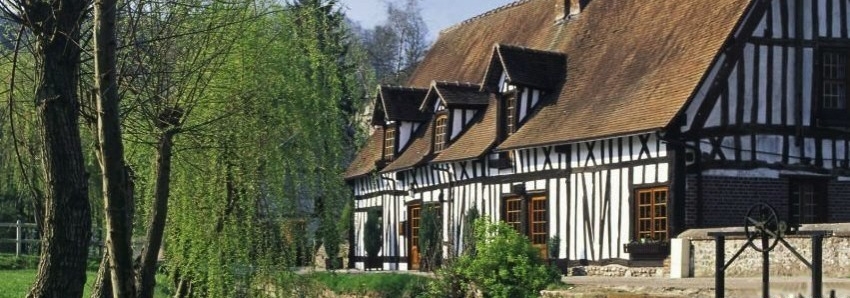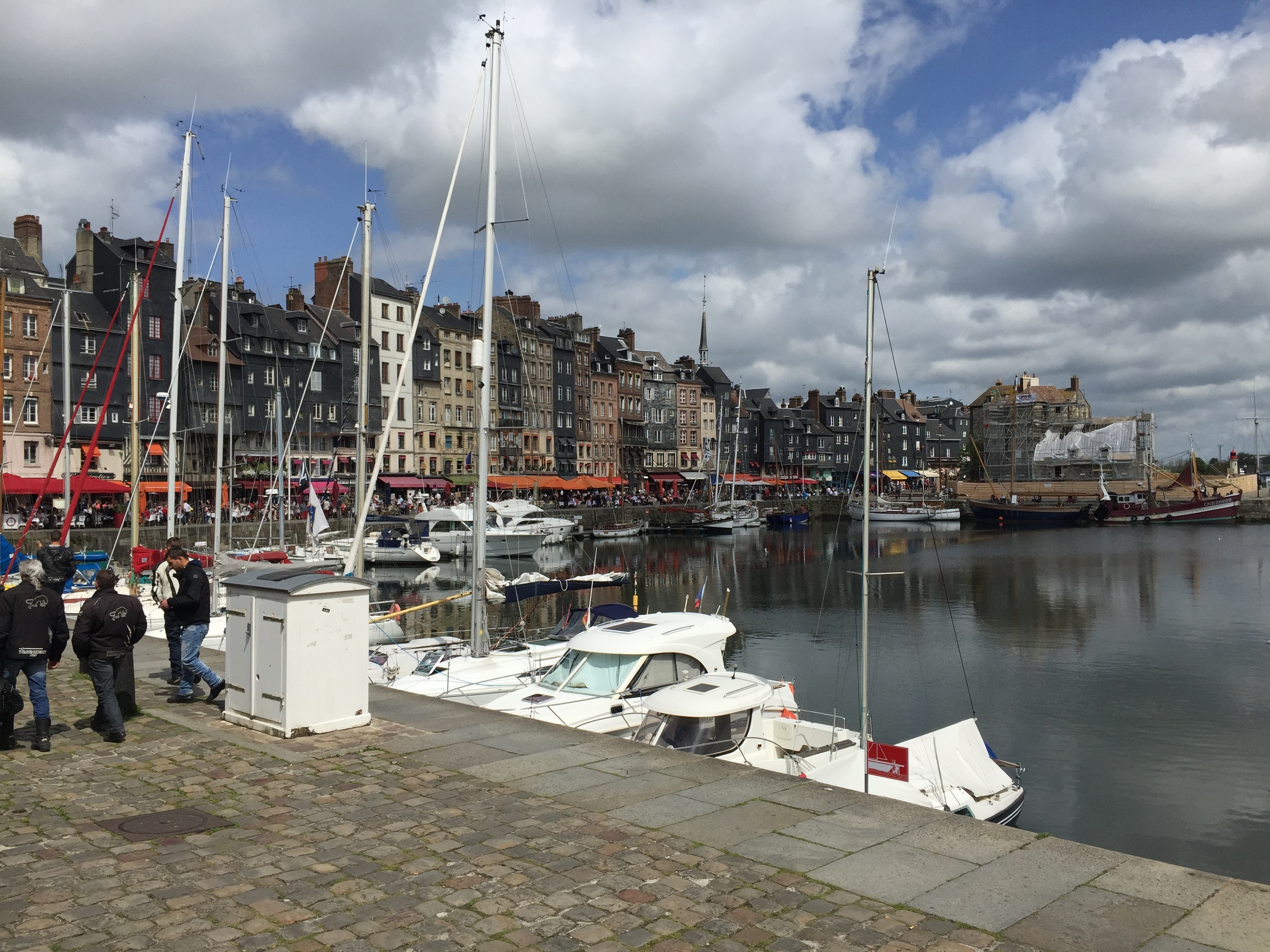Our good friend, Ina Yalof, is a full time writer living in New York. We can’t wait for her next book: Food and the City, a behind the scenes tour of NY’s dynamic food culture, that will be released in May, 2016. Here she shares her trip to Normandy, a region full of rich history, charming medieval towns and seaside villages. Just across the channel from England, many come as a Pilmagrage to visit the D-day beaches, but there is much more in this unique and picturesque part of France to explore.
Tripper Tips:
Normandy is far north and can be windy and wet. Spring is ideal with warm days and mostly sunny skies. Summer tends to be crowded, but is the best time if you also want to enjoy the beaches.
Honfleur has two Michelin starred restaurants, and a few casual places of note; check out this list from Conde Nast Traveller Magazine before you go.
Make sure to sample some of the local specialties such as oysters, lamb and mushrooms, and especially the three C’s—Camembert, Cider and Calvados.
Expectations: I admit that going in to the trip; I went because Marcel, my boyfriend, has always wanted to see where the troops landed on Omaha beach and the surrounding area. I thought that it would be a nice change of scenery and a precursor to the second half of our trip, the one that really mattered – Paris. Was I wrong! I loved every minute of our stay in Normandy, as much if not more so than Paris. The countryside in France is always beautiful and this was no exception.
Logistics and Lunch: We flew to Paris, rented a car and drove for three hours, stopping for lunch at Rouen, a city on the River Seine that is often referred to as the historic capital of Normandy. Rouen is where Joan of Arc was burned at the stake and there is a beautiful Gothic Cathedral (Notre-Dame) to see. We followed in Julia Child’s footsteps at La Couronne, considered the oldest inn in France, where the oysters and Sole Meuniere were so good they inspired her culinary journey.
Stay: From there it was on to Bayeux, where we chose to situate ourselves for four nights. Bayeux is centrally located and our plan was to take day trips from there, which I highly recommend. Bayeux is beautiful, historical, and inclusive of everything you could possibly want from a small village that dates back to the year 1,000. We stayed at Hotel Villa Lara, a small, family run hotel and the best choice in the city. Close by, but in a more formal, luxurious country setting, both Chateau La Cheneviere and Chateau D’Audrieu are highly recommended.
Dinner: For something light head to Le Moulin de Galette, set on the river by a picturesque water wheel. Most menu items are galettes (savory buckwheat crêpes) filled with choices of cheese, meat, vegetables, or mushrooms, and if you still have room to indulge, sweeter crepes for desert. I had the smoked salmon and cream cheese galette and was tempted to go back for the same thing the next night; it was that good. We loved Le Pommier, a highly touted French restaurant, but so does everyone else in Bayeux, so reservations are essential. We had dinner one night at La Rapiere, one of the best restaurants in Bayeux. The food at this flower-filled restaurant was both beautiful and delicious, and with a backdrop of wonderful service. (Make a reservation well in advance.)
Wander: Plan on spending some time to explore Bayeux where it’s easy to walk everywhere. Our first stop was the Bayeux Tapestry Museum, housed in a seminary downtown called Centre Guillaume Le Conquerant. The Bayeux Tapestry is a 230-foot embroidered wool, showing the conquest of England in 1066 by William, The Duke of Normandy. It was well worth waiting in line for! (Go early in the day when the lines are shorter, and get passes at the hotel in advance.) Following the museum, wander up and down the streets – particularly Rue Saint Jean - for some lovely and unique shops. Our last stop, after coffee in one of the many beautiful pastry shops, was the Bayeux Museum, once a mansion in the middle of town.
Day Excursions:
Remembrance: Our second day we booked a private guide through Normandy Sightseeing Tours to see the famous historic beaches of D-Day. Our guide, Adrien Marvyle, could not have been better. He picked us up in a mini-van and we spent eight delightful and informative hours with him. We stopped first in Sainte-Mere Eglise to see the church tower made famous in the movie The Longest Day. From Sainte-Mere Eglise, we drove to Utah and Omaha Beach, where seventy years ago the first of 156,000 soldiers landed in June of 1944. Many of the original German bunkers and accrual remain in place, which is thrilling to see and touch, considering it is all 70 years old. We walked the beaches for a real feeling of history. From Omaha Beach, we drove to the American Cemetery, which is the final resting place for 9,387 Americans. Soldiers of all ranks (private to general) are buried and honored here. A soldier’s rank notwithstanding, each grave is marked with identical Italian white marble headstones. We were there for the 4:30 ceremony: the American flag lowered to the sounds of “taps.” It was a very moving and emotional day. A lovely place for lunch or dinner is La Maree, in nearby Grandcamp-Maisy.
On the Sea: Another day we drove to Honfleur, an enchanting seaport that was originally built essentially for commerce. Its harbor sits on the southern side of the Seine’s estuary. You can spend an hour or two shopping and then have lunch outside at one of the many cafes in town. The best part of the day was spent at the Eugene Boudin Museum; Honfleur’s extensive fine arts museum which houses many paintings by celebrated 19th and 20th century artists including Boudin, Cals, Courbet, Dubourg, Dufy, Jongkind and Monet. Other museums of interest include Les Maisons Satie, Musee de la Marine and the Musee d’Ethnographie, housed in a former prison.
Island Bound: Our last day we drove to Mont Saint-Michel, a granite island in the middle of a huge bay which from the distance looks like a beautiful castle from Disney World. But don’t be fooled. This grand structure started out as a monastery in the year 708, and was eventually replaced by a Benedictine Abbey in the 10th Century. Construction continued century after century until the French Revolution in 1791. In 1864, it was restored before being opened to visitors. It is still a working abbey, with magnificent cloisters and churches and a breathtaking view from the top. (Worth the number of steps you have to climb to reach it!) Wear comfortable shoes as the narrow cobbled streets around the village and the many stairs require a good deal of steep, uphill walking. Hats and sunscreen are also recommended. The automated tour is a must.









